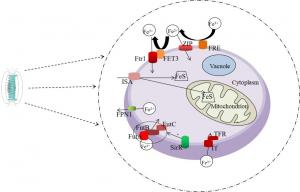Low-frequency magnetic field (LFMF) for enhanced carotenoids production by Rhodotorula glutinis
GA, UNITED STATES, November 15, 2024 /EINPresswire.com/ -- The researchers verified that a LFMF promoted the inward absorption of iron ions and inhibited iron ion excretion, resulting in an elevated iron ion concentration within the cell. This, in turn, stimulated carotenoid synthesis by R. mucilaginosa.
Carotenoids are fat-soluble pigments known for their vibrant yellow, orange, and red hues. Extracting carotenoids from the microorganism Rhodotorula mucilaginosa offers several advantages over plant and animal sources, such as shorter production cycles, independence from seasonal variations, high production efficiency and the ability to control growth conditions precisely. Current research focuses on optimizing microbial methods for enhancing carotenoid production.
In a study (doi: https://doi.org/10.1016/j.foodp.2024.100041) published in the KeAi journal Food Physics, a group of researchers from Yangtze University in Hubei, China, reported a low-frequency magnetic field (LFMF) intensity that could improve carotenoid yield without adversely affecting R. mucilaginosa growth.
Various LFMF intensities were used to assess carotenoid production, intracellular iron content, and the expression levels of genes related to carotenoid synthesis and iron metabolism in R. mucilaginosa.
“Specifically, deletion of the TFR and FPN1 genes significantly disrupts the growth and carotenoid synthesis of R. mucilaginosa, with distinct effects observed for each gene,” shares Mengxiang Gao, senior and corresponding author of the study. “Loss of TFR inhibited the growth of R. mucilaginosa, while markedly increasing carotenoid production and intracellular iron content.”
Conversely, the growth of ∆RmFPN1 was impeded, leading to a significant increase in intracellular iron content. “Our findings serve as initial insights into the mechanism by which LFMF impact carotenoid synthesis through the regulation of iron metabolism,” adds Gao. "We hope that our results would encourage scientists to continue investigating the use of LFMF to increase microbial secondary metabolites not just about carotenoid production in food fermentation industry applications.
DOI
10.1016/j.foodp.2024.100041
Original Source URL
https://doi.org/10.1016/j.foodp.2024.100041
Funding information
This research was part of the project NNSFC (National Natural Science Foundation of China) (32372472).
Lucy Wang
BioDesign Research
email us here
Legal Disclaimer:
EIN Presswire provides this news content "as is" without warranty of any kind. We do not accept any responsibility or liability for the accuracy, content, images, videos, licenses, completeness, legality, or reliability of the information contained in this article. If you have any complaints or copyright issues related to this article, kindly contact the author above.

